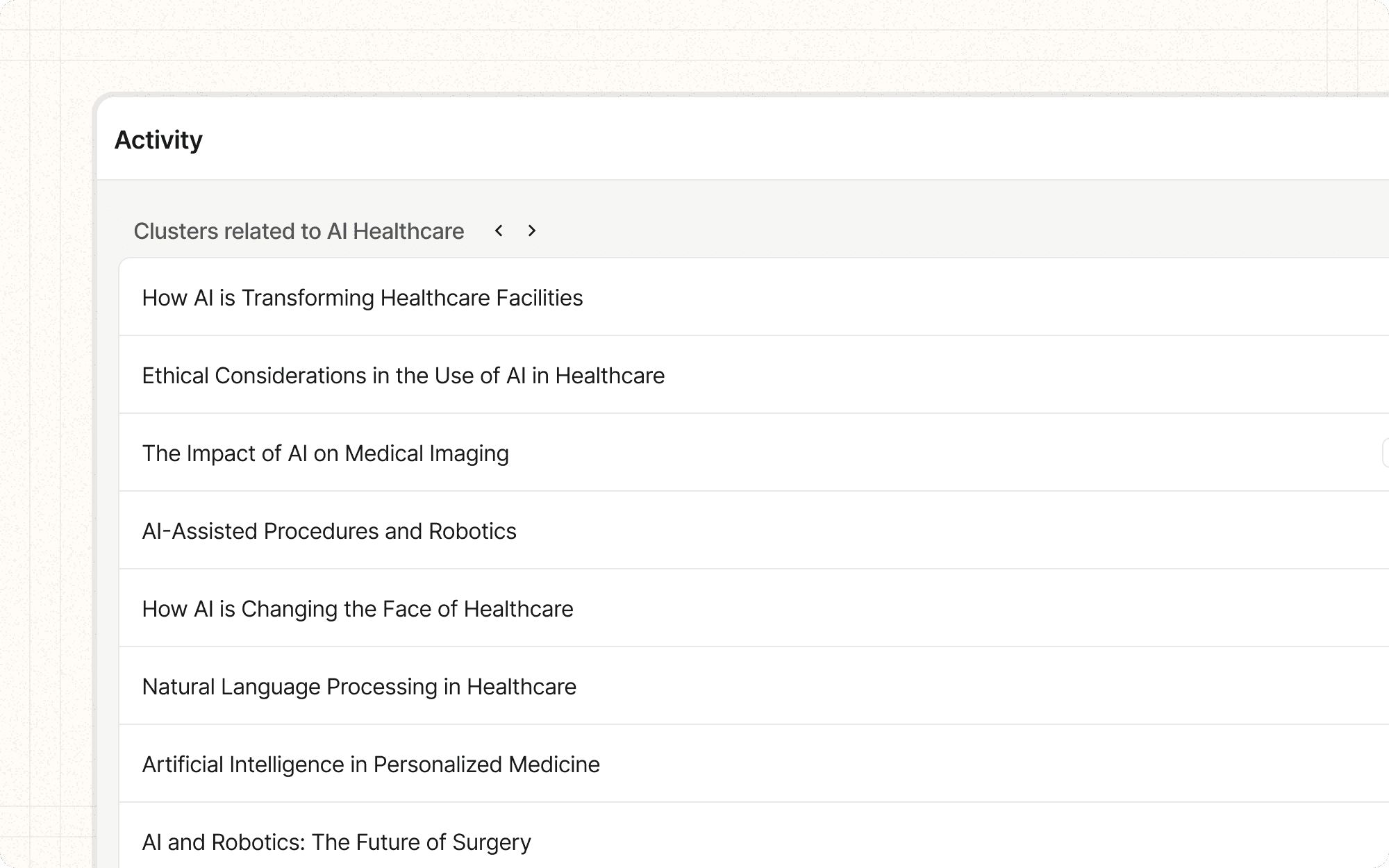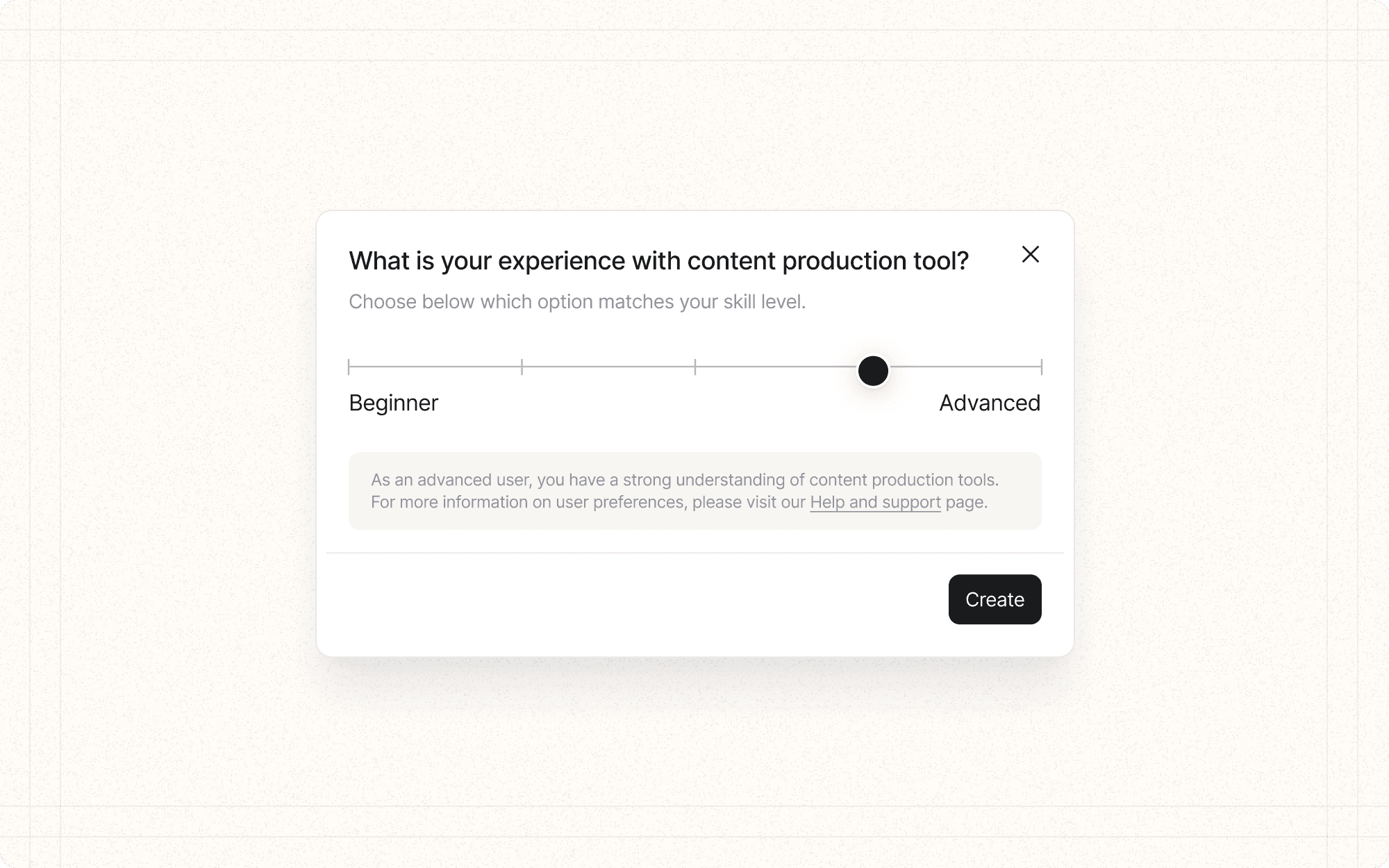Adaptive content
Adaptive content refers to the practice of dynamically adjusting content, layout, or functionality based on user behavior, preferences, or context. This pattern aims to provide a more relevant and personalized experience without requiring explicit user customization.
Benefits and Use Cases
Enhances relevance. Content and features adapt to become more pertinent to the user's current needs or interests.
Example
In Cluster, automatically highlight content categories or clusters that the user interacts with most frequently.
Improves efficiency. By predicting user needs, adaptive content can streamline workflows and reduce time spent searching for relevant information.
Example
Adapt Cluster's content creation interface to prominently display tools and templates related to the user's most common content types.
Personalizes user experience. Subtle adaptations can make the interface feel more tailored to individual users.
Example
Adjust the tone and complexity of help content in Cluster based on the user's experience level or role.
Supports different user segments. The same interface can cater to diverse user groups without manual configuration.
Example
Automatically adjust Cluster's dashboard layout and featured tools based on whether the user is primarily a content creator, editor, or analyst.
Psychological Principles Supported
Relevance Theory. Adaptive content supports the principle that humans naturally focus on information most relevant to their current context.
Example
In Cluster, prioritize notification types based on the user's past engagement patterns, highlighting what's most likely to be relevant.
Cognitive Fit Theory. By adapting to user expertise or preferences, the interface can align with the user's cognitive model, improving task performance.
Example
Adapt the complexity of Cluster's AI-powered content suggestions based on the user's demonstrated familiarity with AI concepts.
Familiarity Principle. Adapting content to match user behavior can create a sense of familiarity, increasing comfort and efficiency.
Example
Subtly adjust the layout of Cluster's content organization tools to mimic the structures most commonly created by the user.
Implementation Guidelines
DON'T
Make drastic changes that might confuse or frustrate users
Adapt content based on single interactions or unreliable data
Ignore user privacy concerns when collecting data for adaptations
Remove access to features or content through adaptation
Assume all users will benefit from the same adaptive rules
DO
Base adaptations on clear, consistent user behavior patterns
Provide transparency about why content or layouts are changing
Allow users to easily override or adjust adaptive features
Regularly review and update the rules driving adaptive content
Ensure adaptive changes are subtle and don't disorient users


